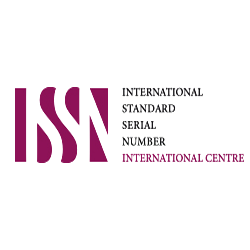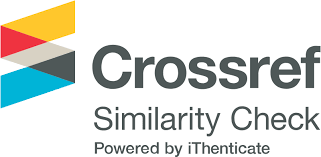
STEPS in BUSINESS EXCELLENCE (SBEXC) is an international, scientific, peer-reviewed, open access journal of Business Management Excellence published quarterly online by Scientific Steps Group (SSG).
STEPS in BUSINESS EXCELLENCE (SBEXC) is an essential platform for researchers, whether they are well-established or in the early stages of their careers. It encompasses all facets of management and business, focusing on the integration and management of various business processes intrinsic to organizational efficiency and effectiveness for competitive success. The scope of the journal includes research articles, empirical studies, case studies on business, with a managerial orientation and emphasis on providing guidelines and approaches.

STEPS in BUSINESS EXCELLENCE (SBEXC) provides a dynamic international forum for the exchange and dissemination of the latest studies on advancements in all functional areas of management, with a particular focus on the influence of research on policy and practice. The primary objective of the journal is to publish scholarly research articles that strongly emphasize Business Excellence. The journal welcomes original and innovative research that presents mature works on Managerial Approaches in Business. In order to cultivate business excellence, all topics related to business management are considered without any exclusions.
STEPS in BUSINESS EXCELLENCE welcomes papers on a wide range of management topics, including:

Dr. Luay Jum’a, B.A, MSc, Ph.D.
Associate Professor of Logistics and Supply chain Management at German Jordanian University(GJU), Amman, Jourdan.
Associate Editors

Dr. Ahmed Zaid., B.Sc, M.Sc, PhD.
Assistant Professor of Operation and Supply Chain
Management at Palestine Technical University-Kadoorie, Palestine.

Dr. Rani Shahwan., BA, MBA, PhD.
Assistant Professor of Strategy and Business Model Innovation at An-najah National University, Palistine.

Dr. Mohammed W.A. Saleh., BSc, MSc, PhD.
Assistant Professor in Accounting at Palestine Technical University-Kadoorie, Palestine.

Dr. Feras Alnaser., BSc, MSc, PhD.
Assistant Professor in Marketing at An-Najah National University, Palestine.

Dr. Mudaser Javaid., MBa, MS, PhD, Postdoctoral.
Assistant Professor in Human Resource Management at Wuhan University China.

Dr. Marwan Milhem., BSc, MSc, PhD.
Assistant Professor in Human Resource Management at Gulf University, Bahrain.

Dr. Zahoor Ur Rehman., BSc, MS, PhD.
Assistant Professor in Marketing at Centre for Business Development (CBD), Universiti Tun Hussein onn Malaysia (UTHM).

Dr. Bestoon Abdulmaged Othman., PhD.
Lecturer at Erbil Polytechnic University, Kurdistan Region, Iraq.

Dr. Mohammed Ishaq., B.Sc, M,Sc, PhD.
Senior Lecturer at Abubakar Tafawa Balewa University Bauchi, Bauchi, Nigeria
All articles published in STEPS in BUSINESS EXCELLENCE (SBEXC) are published in full open access. An article processing charge (APC) of 950 USD applies to papers accepted after peer review.
This article processing charge is to cover the costs of peer review, copyediting, typesetting, long-term archiving, and journal management.
Local VAT or Sales Tax will be added if applicable.
Submitted papers should be well formatted and use good English. Authors may use SSG’s English editing service prior to publication or during author revisions.
You can read more about Article Processing Charges (APC) of SSG’s Journals.
1.The STEPS in BUSINESS EXCELLENCE (SBEXC) is an internationally recognized publication in the field of civil engineering and infrastructure. This scientific journal features peer-reviewed, open access articles and is published bimonthly by SSG.
2. Determine the type of article you wish to submit:
• Research Article/Original Research: A complete description of original research findings.
• Letters/Short Reports/Communications: Brief descriptions of research findings.
• Review Article: A comprehensive summary of a topic that identifies and summarizes the results of original articles on the topic. Review articles may include, but are not limited to, scoping reviews, systematic reviews, critical reviews, literature reviews, and meta-analyses.
• Case Report: A descriptive, exploratory or explanatory analysis of a person, group, or event.
• Viewpoint/Opinion: An essay presenting an opinion on a specific topic, which may sometimes be controversial.
3. Ensure the originality of your manuscript by checking it for plagiarism using a plagiarism checker. The maximum similarity rate allowed in STEPS in BUSINESS EXCELLENCE (SBEXC) is 20%. Additional information regarding publishing ethics, including plagiarism, can be found in the Publication Ethics
4. Prepare your manuscript using the Microsoft Word Template
5. Submit your manuscript online through the submission website. The submitting author, who is typically the corresponding author, is responsible for the manuscript during the submission and peer-review process. The submitting author must confirm that all eligible co-authors have been included in the author list and have approved the submitted version of the manuscript. All co-authors can view the manuscript details in the submission system by registering and logging in using the email address provided during manuscript submission.
6. Manuscript presentation:
6.1. Formatting a Manuscript for Submission
a. Writing Style: Manuscripts must be written in clear, concise English and should be typed using a Times New Roman font, size 12 pt. Please use 1.5 line spacing for all materials. The total length of the paper, including text, tables, and figures, should not exceed 25 pages. Tables and figures should be placed within the text.
b. Formatting: Manuscripts should not include headers, footers, line numbers, notes, or footnotes. The final manuscript file size should not exceed 3 MB.
c. Scientific Ethics: The manuscript should follow ethical standards in scientific writing, including:
• Ensuring that all individuals who made significant contributions to the research are included as authors and those without significant contributions are excluded.
• Avoiding plagiarism by properly referencing sources and rephrasing as necessary.
• Taking caution regarding the novelty and copyrights of others.
6.2. Manuscript Structure:
A. Title Page: The title page should include the following elements:
i. Title: The title should be informative, meaningful, specific, and concise. It should avoid unnecessary jargon, abbreviations, and detail.
ii. Author Names: The full names of all authors should be provided.
iii. Author Affiliations: Institutional full addresses for all authors should be included.
iv. Corresponding Author: The name and email address of the corresponding author should be specified and marked with an asterisk (*). The corresponding author is responsible for any disputes arising from publication.
v. Abstract: The abstract should be limited to 250 words and should provide an overview of the research objectives, methodology, results, and conclusions.
vi. Keywords: Five selective and appropriate keywords should be included for indexing purposes. Avoid uncommon abbreviations and general terms.
Note: No other subheadings should be included in the manuscript.
B. Main Text
Original Investigations and Brief Reports typically comprise five sections: Introduction, Materials, Methods, Results, and Discussion.
i) Introduction
• This section provides the necessary context for the research work by presenting background information in three to four paragraphs. The introduction should explain the motivation and objectives of the study based on the type or category of information being presented. It should not include:
• A description of methods, results, or conclusions other than a brief outline of what was done and achieved in the final paragraph.
• Information on data collection and analysis methods.
• Brief terms of what was achieved.
• An extensive review of the field.
• An disproportionate citation of the author’s own work, the work of colleagues, or work that supports their findings while ignoring contradictory studies or work by competitors.
ii) Methodology
• This section should provide full details that would allow competent workers to replicate the experiment. The materials section should specify the exact technical specifications, quantities, and sources or methods of preparation. The methods section should describe the chronological order in which the study was carried out and should be brief yet informative. The section should clearly explain the study process and structure, including the materials used, the design of the experiment, the protocol for recording data, and the data analysis methods.
• Subheadings should be provided for each category, method, procedure, study area, or analysis used.
• Most of the section should be written in the past tense using passive voice, and results should not be included.
iii) Results/Case Studies
• This section presents the experimental data to the reader and is the most significant part of a paper. The results should be presented in tables and figures and each group of tables and figures should be introduced in a separate paragraph, noting the overall trends and data points of particular interest. Key statistics, such as the number of samples (n), the index of dispersion (SEM, SD), and the index of central tendency (mean, median, or mode), should be stated without reference for experimental studies. Any statistical analysis performed should be indicated and specific statistical data, such as p-values, should be included.
• The section should be short, clearly presented, and free from discussion.
• Tables and figures should be used to organize the data systematically, with tables showing exact values and figures showing trends or relationship effects.
• Figures and tables should be easy to understand without the need for reference to the text.
• The same information should not be presented in both a table and a figure.
• A textual representation of the key findings should be provided with each table and figure, using different tenses to give different information in the results section.
• Each table and figure presented in the paper should be referred to in the results section without reference.
iv) Discussion
• The discussion section is often the most challenging to write, but it should be straightforward if the previous sections have been properly constructed. The discussion should begin with a brief paragraph that provides an overview of the work and summarizes the most important findings. If the study characterized a phenomenon by studying specific effects, the results should be used to describe each effect in separate paragraphs. If the study presented a hypothesis, the results should be used to construct a logical argument to support or reject the hypothesis. If the study had three main objectives, the results should be used to address each of these objectives.
• The discussion should present the principles, relationships, and generalizations shown by the results, rather than simply reiterating the results.
• Exceptions or lack of correction should be pointed out, and unsettled points should be defined.
• The author’s results and interpretations should be.
vii) References
• All references cited in the text should be included in the References section. Careful consideration should be given to the selection of references, ensuring that they include relevant and key sources within the field as well as previous studies that support or provide context for the present work. References should not be included for the purpose of merely citing specific authors or journals, unless they are relevant to the current study. Previous publications from the author’s laboratory may be appropriate to cite. The references should be formatted according to the APA (7th edition) style.
• Examples of different reference types include:
Journal Article
Afrianto. (2018). Being a Professional Teacher in the Era of Industrial Revolution 4. 0: Opportunities, Challenges and Strategies for Innovative Classroom Practices. English Language Teaching and Research, 2(1), 1-13.
Albantani, A. M., & Madkur, A. (2017). Musyahadat Al Fidyu: Youtube-Based Teaching and Learning of Arabic as Foreign Language (AFL). Dinamika Ilmu, 17(2), 291-308.
Book
McKibbin, B. (2007). Deep economy: The Wealth of Communities and The Durable Future. New York: Times Book/Henry Hold and Co
Panitch, L., & Gindin, S. (2012). The Making of Global Capitalism: The Political Economy of American Empire. London: Verso.
Book Chapter
Pigg, K. E., & Bradshaw, T. K. (2003). Catalytic Community Development: A Theory of Practice for Changing Rural Society. In D. L. Brown & L. E. Swanson (Eds.), Challenges for Rural America in The Twenty-First Century (pp. 385-396). Pennsylvania State University Press.
Regulations and Laws
Law Number 23 of 2011 concerning Zakat Management. November 25, 2011. State Gazette of the Republic of Indonesia Year 2011 Number 115. Jakarta.
Law Number 5 of 1984 concerning Industry. June 29, 1984. State Gazette of the Republic of Indonesia Year 1984 Number 22. Jakarta.
Thesis
Choiri, A. (2021). Pemberdayaan Pemulung Melalui Pengelolaan Sampah Plastik di Medayu Utara Rungkut Surabaya [Thesis]. UIN Sunan Ampel Surabaya, Surabaya.
Erizal, Y. (2011). Analisa Pelaksanaan Kemitraan Anak Angkat Bapak Angkat (ABA) dalam Usaha Agribisnis Kelapa Sawit di PT. GMP Kec. Pasaman Kabupaten Pasaman Barat [Thesis]. University if Andalas, Padang.
Internet Sources
Jenkis, R. (2018, January 7). Generation Z vs. Millennials: The 8 Differences You Need to Know. HR Daily Advisor. Retrieved from https://hrdailyadvisor.blr.com/2017/09/25/generation-z-vs-millennials-8-differences-need-know/
Maritime Security Agency of the Republic of Indonesia. (2021, June 25). Amerika Serikat dan Indonesia Bangun Pusat Pelatihan Maritim. Maritime Security Agency of the Republic of Indonesia. Retrieved from https://bakamla.go.id/publication/detail_news/amerika-serikat-dan-indonesia-bangun-pusat-pelatihan-maritim
The authors must ensure that before submitting the manuscript for publication, they have taken care of the following matters:
– The title page should contain the full title, name of the author/co-authors, their designation & institutions they are affiliated with an email address for future correspondence.
– Abstract in structured format up to 250 words.
– References are mentioned as stated in the Instruction to Authors section.
– Make sure for Headings of Tables, their numbers and Captions of illustrations. Don’t repeat the information.
– Photographs illustrations with high resolution and their captions.




An independent academic publisher with an editorial team including many of the top researchers in the world. SSG publishes research, review, and case report articles in double-blind, peer-reviewed, open access scientific and academic journals.
Copyright © 2025 Scientific Steps International Publishing Services LLC (Dubai – United Arab Emirates)